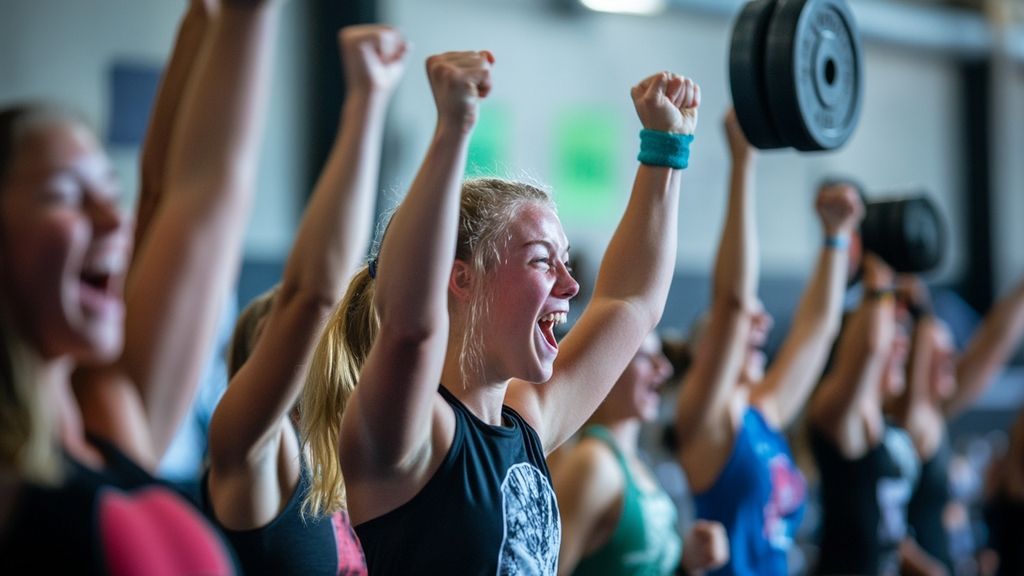CrossFit has become a global phenomenon, resonating with fitness enthusiasts and those looking to transform their health. At the core of this high-intensity training regime lies the Workout of the Day (WOD). This daily workout not only challenges athletes but also fosters a sense of community among participants. Understanding what WODs entail and how they are structured can empower beginners and veterans alike to maximize the benefits of CrossFit.
The concept of the WOD is simple yet effective: a collection of functional movements performed at high intensity. Each day, CrossFit gyms around the world introduce a new workout, carefully designed to test different physical skills, from strength to endurance to mobility.
What makes a WOD unique is its ability to be scaled and modified, allowing individuals of varying fitness levels to engage fully. Whether you’re a seasoned CrossFit athlete or a newcomer, knowing how to approach a WOD can significantly enhance your training experience.
Understanding the Components of a WOD
A WOD typically includes several components, each designed to elevate fitness levels effectively. Three primary elements make up most WODs: strength training, metabolic conditioning, and skill development. Let’s delve deeper into each component.
Strength Training
Strength training is a cornerstone of CrossFit, focusing on building power and muscle mass. This component includes exercises such as squats, deadlifts, or Olympic lifts. Regular practice helps in enhancing overall performance while reducing the risk of injury in functional movements.
Metabolic Conditioning
Next is metabolic conditioning, which emphasizes various cardiovascular workouts. These activities, including rowing and running, are designed to elevate heart rate and boost metabolic efficiency. Regarding WODs, metabolic conditioning can involve high-rep movements to push endurance limits.
Skill Development
Lastly, skill development focuses on improving technique and abilities through drills. Practicing movements like double-unders or handstand push-ups falls into this category. Prioritizing skill work ensures that athletes can perform workouts safely and efficiently, reducing the likelihood of injury.
Examples of Popular WODs

Hundreds of different WODs are performed globally, each with its unique challenge. Some workouts have transcended the CrossFit community to become iconic. Here are a few examples:
Fran
This workout consists of 21-15-9 reps for time of thrusters and pull-ups. It perfectly blends strength and endurance, making it a favorite.
Murph
Remembered for its difficulty, this hero workout requires participants to run a mile, complete 100 pull-ups, 200 push-ups, and 300 squats, followed by another mile run.
Helen
A conditioning workout that incorporates a 400m run, kettlebell swings, and pull-ups, Helen is accessible yet challenging, appealing to a wide range of fitness levels.
How to Scale a WOD
One of the key aspects of CrossFit is its scalability. WODs must be tailored to fit the individual capabilities of each athlete without compromising the workout’s intensity. Here’s how scaling works:
Adjusting Weight
Scaling the load is often the first adjustment a coach will recommend. When a WOD prescribes kettlebell swings, for instance, lighter weights can be substituted for those new to the movement.
Modifying Reps
Reducing the number of repetitions is another effective way to make the workout manageable. For certain workouts, beginners can start with fewer sets to ensure they maintain proper form and do not risk injury.
Replacing Movements
Some athletes may find particular movements challenging due to injury or physical limitations. Incorporating alternative movements, such as kettlebell deadlifts instead of swings, can offer a viable replacement. Emphasizing safety ensures that all participants can benefit from CrossFit’s philosophy.
The Importance of Community in WODs

Exercise can often feel daunting, but the community aspect of CrossFit mitigates that intimidation. WODs are not just individual battles; they foster camaraderie and support.
Motivation
Working out alongside others can provide immense motivation. The sense of competition, whether friendly or fierce, encourages individuals to push beyond their perceived limitations.
Accountability
Having fellow members witness your journey builds accountability. It fosters a culture where everyone strives for progress, knowing their effort influences those around them.
Celebration of Achievements
CrossFit communities celebrate personal bests and milestones, creating an encouraging environment where each member feels valued. This culture bolsters performance and cultivates lasting friendships.
Tips for Your First WOD
Stepping into the CrossFit world can be daunting, especially for newcomers. However, being well-prepared can make a significant difference. Here are some tips for your first WOD:
Listen to Your Coach
Your coach is your best ally. They are trained to assist you with technique and scaling the workout properly. Don’t hesitate to ask questions at any time.
Warm Up Properly
A comprehensive warm-up is essential to prevent injuries. Engage in dynamic stretches and movements that prepare your muscles for the upcoming challenges.
Stay Hydrated
Remember to hydrate before and during your workout. Hydration is critical for optimal performance and recovery.
Focus on Form Over Speed
While WODs are time-driven, ensuring proper form should always be your priority. This focus not only leads to better results but also protects you from injuries.
Nutrition to Fuel Your WOD

Lastly, nutrition plays a vital role in optimizing your performance during a WOD. Consider these aspects when planning your meals:
Pre-WOD Nutrition
Having a balanced meal before your workout can provide the necessary energy. Aim for a combination of carbohydrates and protein about 30-60 minutes before your session.
Post-WOD Recovery
Fueling your body after a workout is crucial for recovery. A mixture of protein and carbohydrates can help replenish the energy expended during your WOD, aiding muscle repair and growth.
Hydration
Don’t underestimate the impact of hydration. Staying hydrated helps maintain your performance and speeds up recovery. Consider electrolyte drinks if you’ve had an especially sweaty session.
